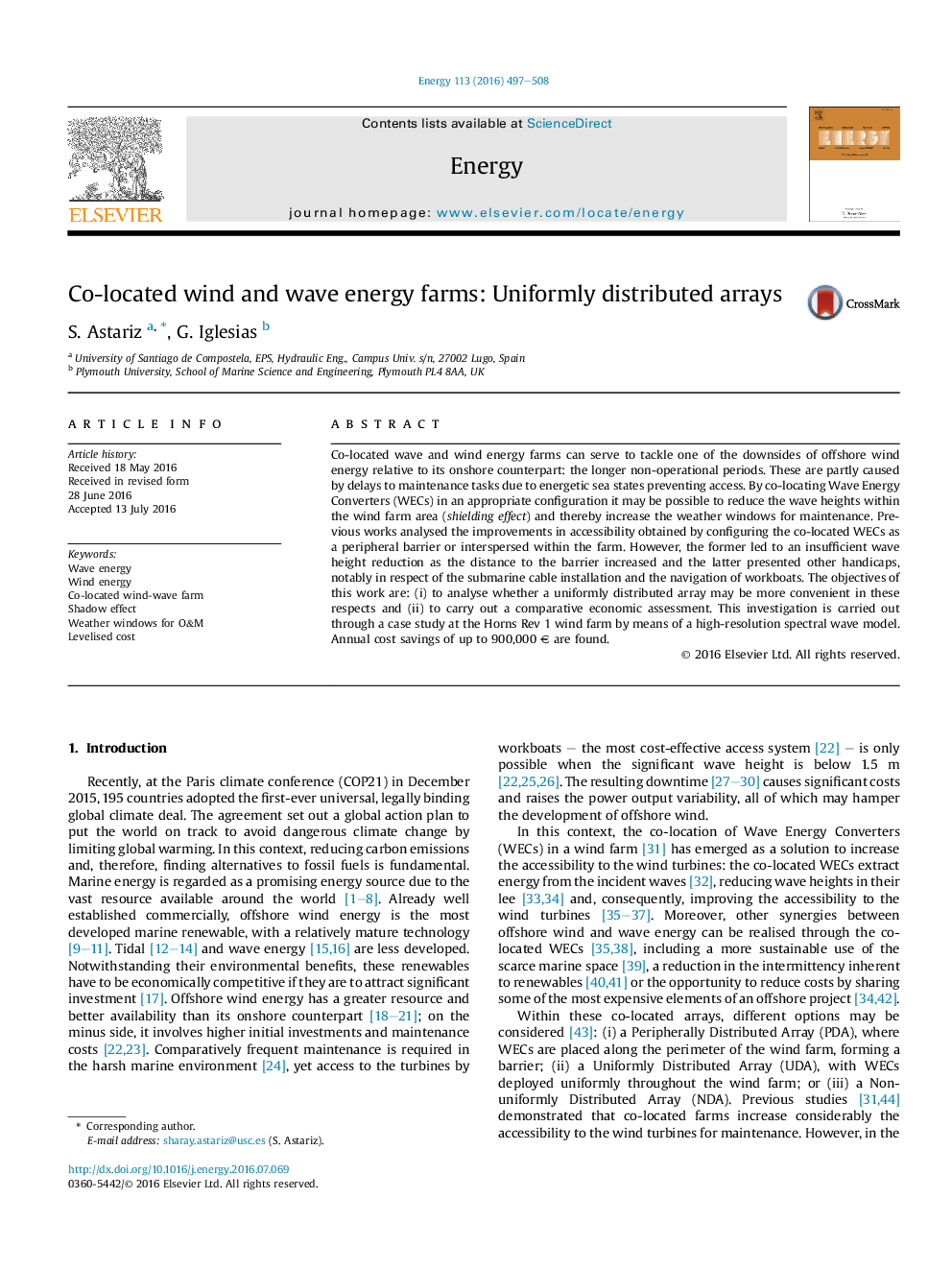| Article ID | Journal | Published Year | Pages | File Type |
|---|---|---|---|---|
| 1730757 | Energy | 2016 | 12 Pages |
•New configurations for co-location of WECs into wind farms are investigated.•An offshore wind farm currently in operation is considered for the baseline scenario.•Uniformly, non-uniformly and peripherally distributed WEC arrays are compared.•The improvement in wind turbine accessibility for maintenance is quantified.•A comparative economic assessment is undertaken by means of LCOE.
Co-located wave and wind energy farms can serve to tackle one of the downsides of offshore wind energy relative to its onshore counterpart: the longer non-operational periods. These are partly caused by delays to maintenance tasks due to energetic sea states preventing access. By co-locating Wave Energy Converters (WECs) in an appropriate configuration it may be possible to reduce the wave heights within the wind farm area (shielding effect) and thereby increase the weather windows for maintenance. Previous works analysed the improvements in accessibility obtained by configuring the co-located WECs as a peripheral barrier or interspersed within the farm. However, the former led to an insufficient wave height reduction as the distance to the barrier increased and the latter presented other handicaps, notably in respect of the submarine cable installation and the navigation of workboats. The objectives of this work are: (i) to analyse whether a uniformly distributed array may be more convenient in these respects and (ii) to carry out a comparative economic assessment. This investigation is carried out through a case study at the Horns Rev 1 wind farm by means of a high-resolution spectral wave model. Annual cost savings of up to 900,000 € are found.
